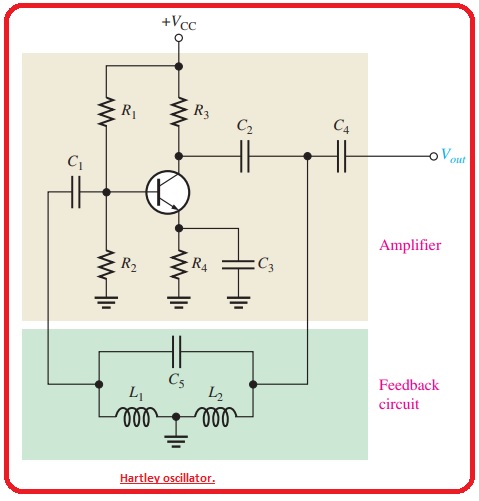Therefore connecting the secondary to ground and discharging C4 and 5 through the primary. From what I see the mosfet acts like the spark gap of sorts.
In a way. The transformer windings couple the changes in drain current, the varying voltage across L1, to L2 and L3.
Those in turn modulate the gate voltage and provide the circuit output.
This oscillator may be easier to understand. The coil is two windings in phase, or one winding with a tap in the centre whichever way you want to look at it.
Like a centre tapped mains transformer secondary, if one end goes (or is forced) positive compared to the centre, the other end goes negative; and vice versa.
If the transistor starts to turn on and the voltage at its collector changes toward negative, making the right hand end of the coil do the same via C2, the left hand end goes positive and that couples to the base via C1, making the transistor turn on harder.
That accelerates the turn on and the collector going negative, until there is no more change.
At that, the voltage across the coil windings starts to drop - making the base go towards negative and turning the transistor off; which makes the collector go towards positive, with the right hand end of the coil following it & making the left hand end go more negative, again until the voltage limits are reached.
The capacitor across the coil resonates it and sets the working frequency, also giving a smoother waveform rather than just a square wave.
It's a bit like one end of a two transistor "multivibrator", but with the coil (actually a tuned circuit) being used to invert the signal before its fed back to the base, rather than another transistor providing the inversion.


